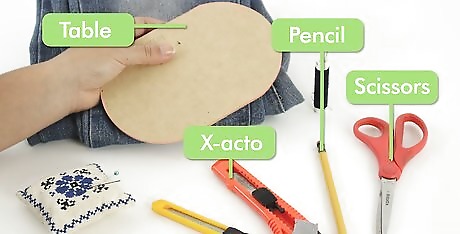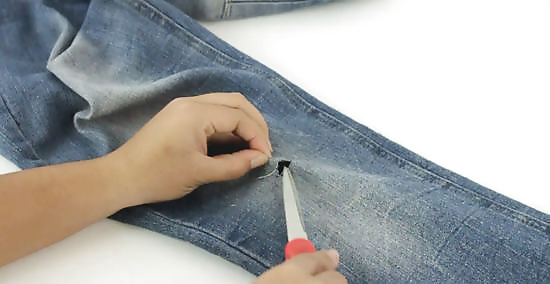
views

Choose a pair of jeans that fit you well. You can rip any pair of jeans and get the same results, but don’t feel obligated to rip a pair of jeans you already own, as you can thrift for comfortable, cheap jeans at local secondhand and consignment shops. Using jeans that are already worn a bit may give you better results than using brand new jeans, but don’t let that stop you from purchasing a new pair for this project. Light to medium wash jeans typically look the best when ripped, as their color lends them a more distressed look. Dark washed jeans look too freshly dyed to be ripped, and might not look as “realistic.”

Gather your supplies. Pretty much all you need to rip up your jeans is a pair of jeans and something sharp. Depending on what kind of style you want, though, you'll probably want to use a sharp tool appropriate for the job: If you want to create holes, use scissors, a razor, or a sharp knife to rip your jeans. X-acto knives or box cutters will work as well. To create a frayed look, use sandpaper, a cheese grater, steel wool, or a pumice stone.

Pick a spot to rip. Lay your jeans out flat on a table, and use a pencil or chalk to mark the places you want to tear. Use a ruler to mark an exact length if you want. Keep in mind the ultimate shape and the length as well as the width of your holes. While you can use pencil, pen, or chalk to mark the lines, chalk is the safest for the material and least likely to result in mistakes. If you accidentally mess up your lines in chalk, you can easily wash them out with a little water! Generally, most people only rip around the knees of jeans, though you can rip anywhere around the leg of the pants. Try to aim a little higher than your knee, so the tear won't get super-big as you walk around. Every time your knee bends, it might catch the hole and rip it more. Don't rip too high, or your underwear might show.

Spread out the jeans on a flat surface. Slip a small block of wood to insert into the pant legs while you do the distressing, so that you don’t alter both the front and the back of the pants. Alternatively, you could even use a cutting board, an old book or stack of magazines, or anything you wouldn't mind cutting into. Just don't do it on the kitchen table, if you're using a very sharp knife.

Start fraying the jeans with sandpaper. Before you start cutting up the jeans, use the sandpaper or steel wool to start rubbing and thinning out the spot you want to rip up. This helps to loosen the fibers in the jeans and make it easier to rip. Use a variety of different tools. Alternate between using sandpaper, steel wool, and your pumice stone if you have everything. This may take a bit of time depending on the thickness of your jeans to start. If you'd rather just cut the jeans, go ahead. You don't have to weaken them first, unless you want them to look frayed.

Loosen the fibers more to create holes. If you want frayed areas and stringy patches in your jeans, use your scissors or knife to tug at the area you just weakened with the sandpaper. This will loosen fibers in the area, allowing for a little skin to show through when worn. Pull at the white threads that stick out from the jeans to encourage this look.

Add holes with the knife or scissors. Take your scissors and cut a small section inside the distressed area. Make it as small as possible. You can always make it bigger, but you risk ruining the jeans and making them unwearable if you make it too big. Aim for a tear no bigger than a half-inch or so. Make the rip across your body, not up and down. This looks more natural.

Use your hands to rip the jeans even further. Ripping it will tear the fibers, making it look like a real hole. Tug at the threads to pull them out a bit, as they would with natural rips. Avoid cutting the hole too much, as this will give a very clean, unnatural edge to the fabric. Alternatively, you can also just cut a small hole and let it grow as you wear the jeans. It'll look more natural this way.

Reinforce your jeans, if you wish. To keep the holes from getting even bigger, reinforce them by sewing around the perimeter of the hole. Use either a white or blue-colored thread to sew around the rip, either by hand or with a sewing machine. If you want the jeans to grow over time, feel free to nix this step. If you want to learn more about sewing jeans, read this article.

Wear your ripped jeans!

















Comments
0 comment